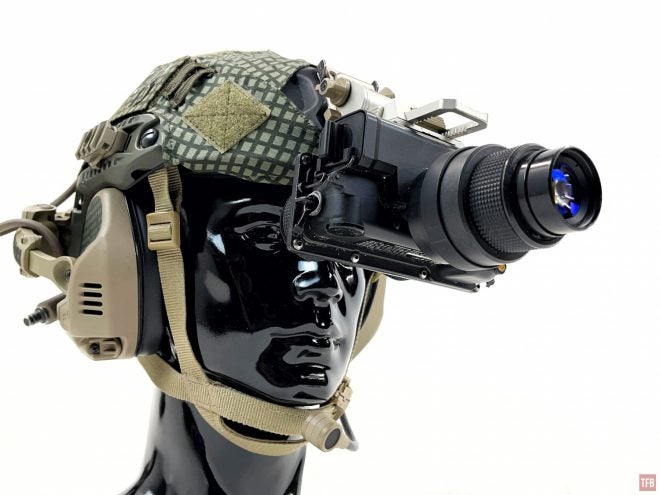Welcome back to Friday Night Lights. Every week you can find good pics and in-depth looks at various night vision and thermal devices. We occasionally look at night vision accessories like lasers and lights. This week we take a look at a historic night vision device. The Litton PVS-7A. This night vision goggle predates the infamous PVS-7 and has features ahead of its time. Let’s dive in and take a closer look.
NV Binoculars @TFB:
- Friday Night Lights: AN/PVS-7 – What Not To Spend Your Coronabux Stimulus Money On
- Friday Night Lights: Night Vision Magnifier
- Friday Night Lights: Norwegian SIMRAD GN1 – Biocular NVGs
Before we dive deep into the PVS-7A, I know I wrote an article about not buying a PVS-7. I still stand behind it. I think you are better off saving a bit more money and buying an entry-level PVS-14. This is just due to replacement parts and accessories for PVS-14s are more prevalent. Also, you can upgrade a PVS-14 into a dual tube later down the road. The PVS-7 is an obsolete system and is not going anywhere nor can it be upgraded other than a better tube. Also, the PVS-7 design is biocular. NOT a binocular. Binoculars mean each eye sees a distinct image that is different from the other eye. This gives your brain two images to merge and you can discern stereopsis (spatial awareness). Not the case with a biocular design. Both eyes see the same image so you do not have stereopsis. That being said, the PVS-7 is interesting for collection reasons and that is why I acquired a Litton PVS-7A.

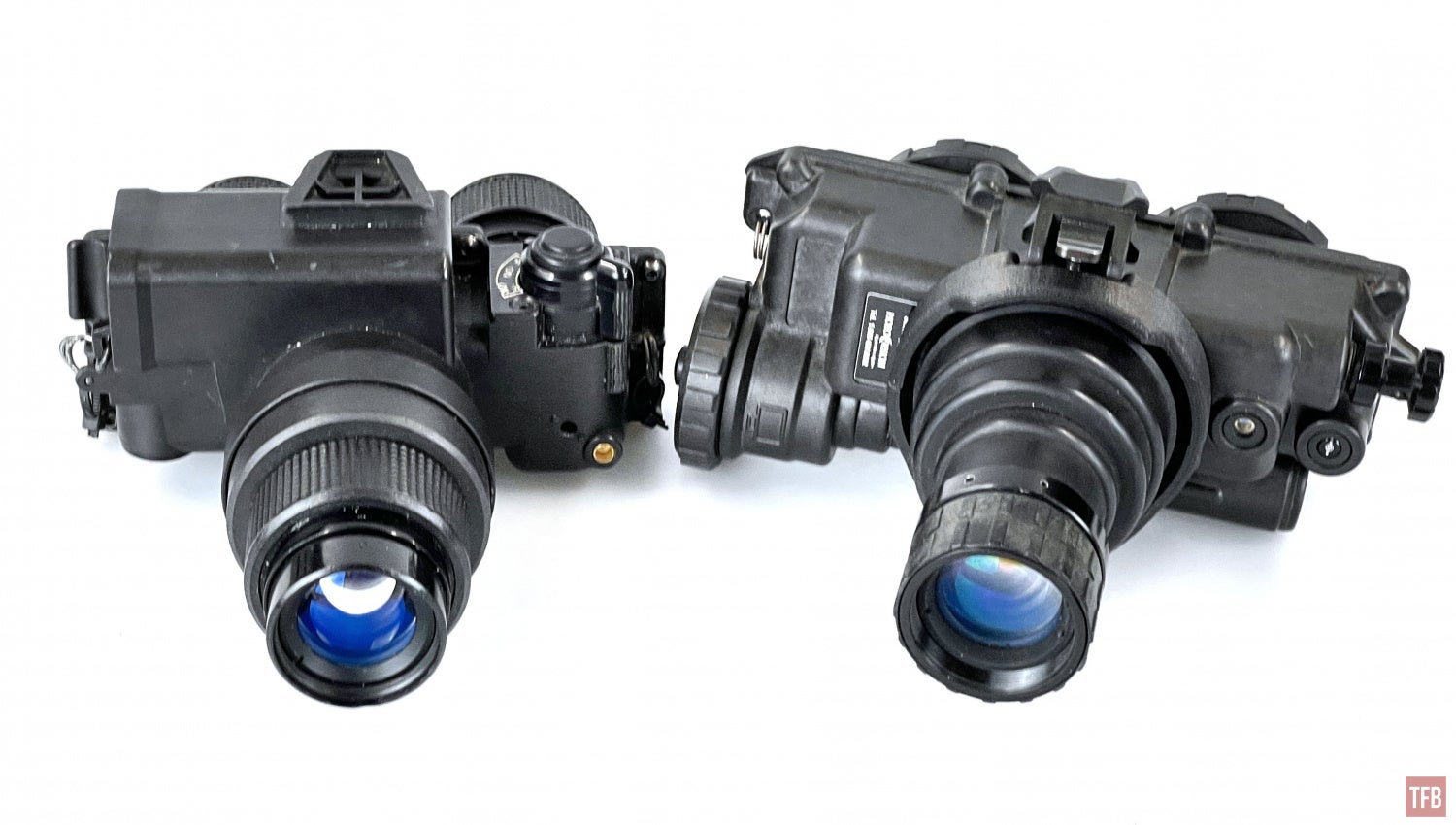
Here is the Litton PVS-7A next to my PVS-7. You can immediately see the differences. The PVS-7A is a bit slimmer and rather than having 2xAA batteries in a stack, they sit side by side above the housing.

The objective lens housing is wider than the standard PVS-7 but the PVS-7A has a dovetail.
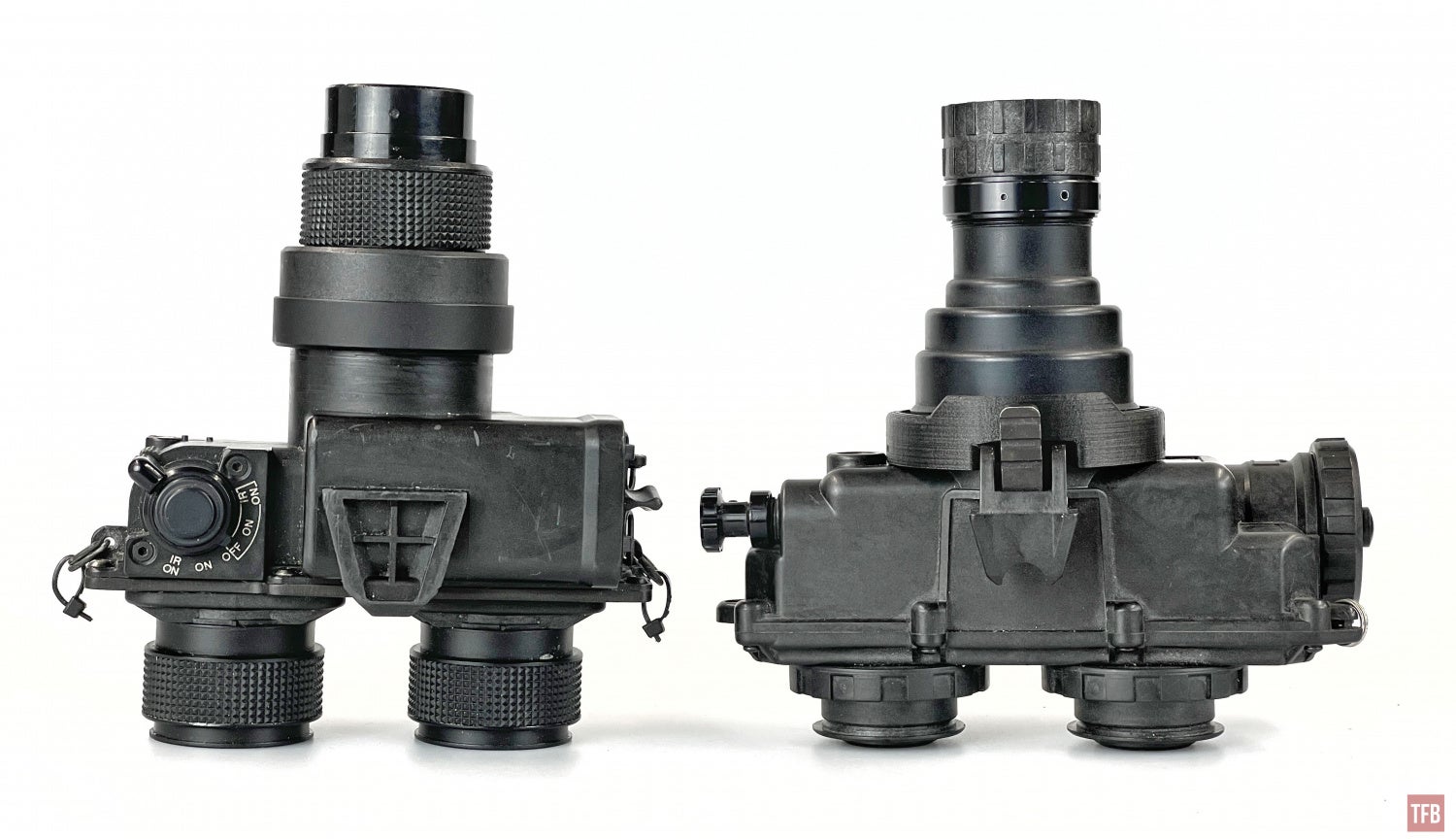



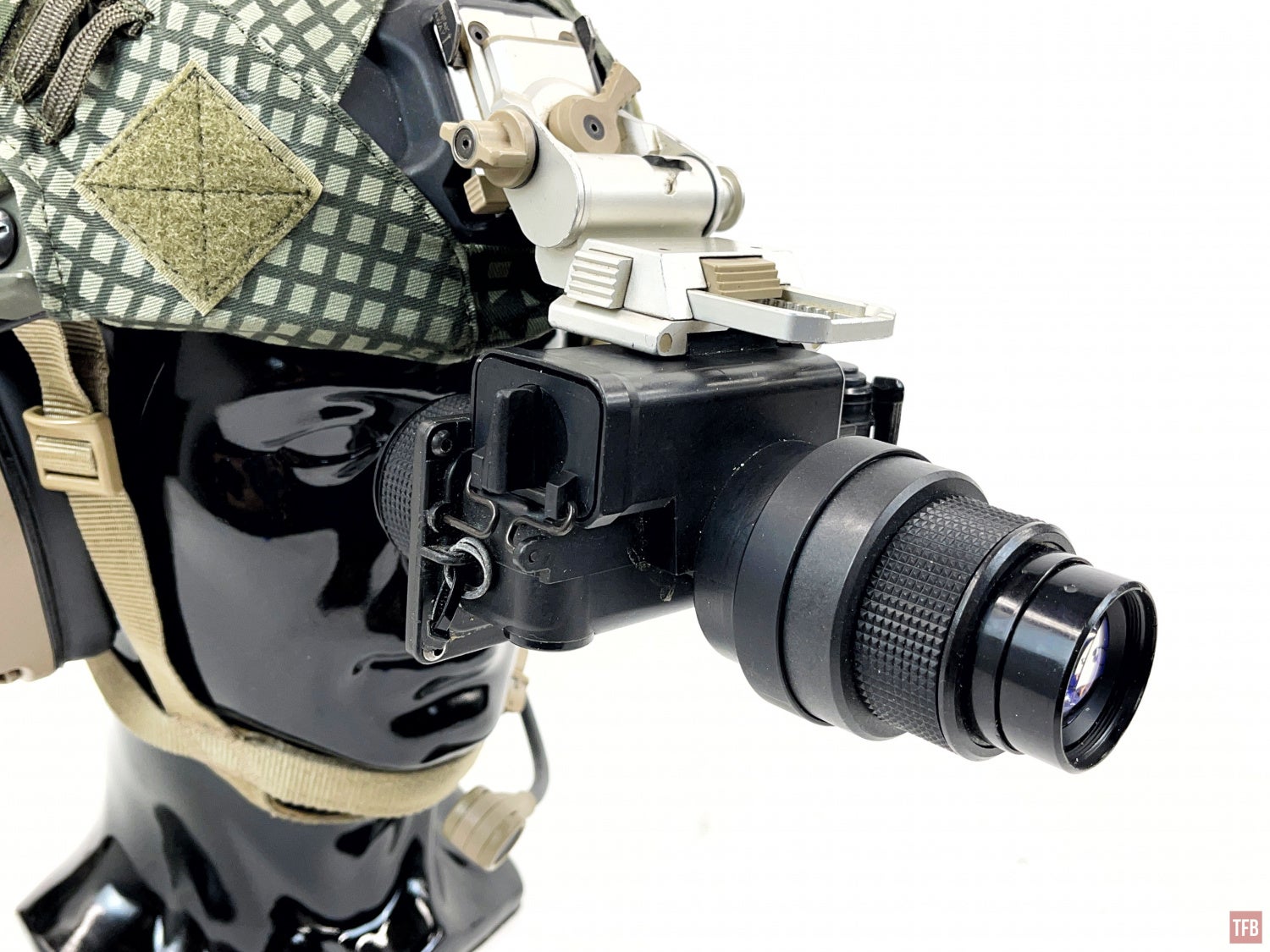
As mentioned earlier, the Litton PVS-7A has a built-in dovetail molded into the housing. This was designed in the 80s before dovetail interfaces became standard in the early 2000s with the PVS-15 and PVS-18.


But if dovetail interfaces were not standard how did they mount them?
Litton had proprietary head mounts (skull crushers) that had female dovetail shoes built into them. My PVS-7A did not come with one so I do not have photos of it. Interestingly though the Litton PVS-7A utilized magnetic activation when connected to the skull crusher head mount. See the rotary switch below? It has two sections. Rotate the switch to the left to select the enclosed options This is for use with the head mount. If the PVS-7A is not mounted to the skull crusher, it will not turn on even when the rotary switch is set to ON. If you want to use the PVS-7A as a handheld device, you can rotate the rotary switch clockwise to the open ON position. IR ON will activate the onboard IR illuminator.

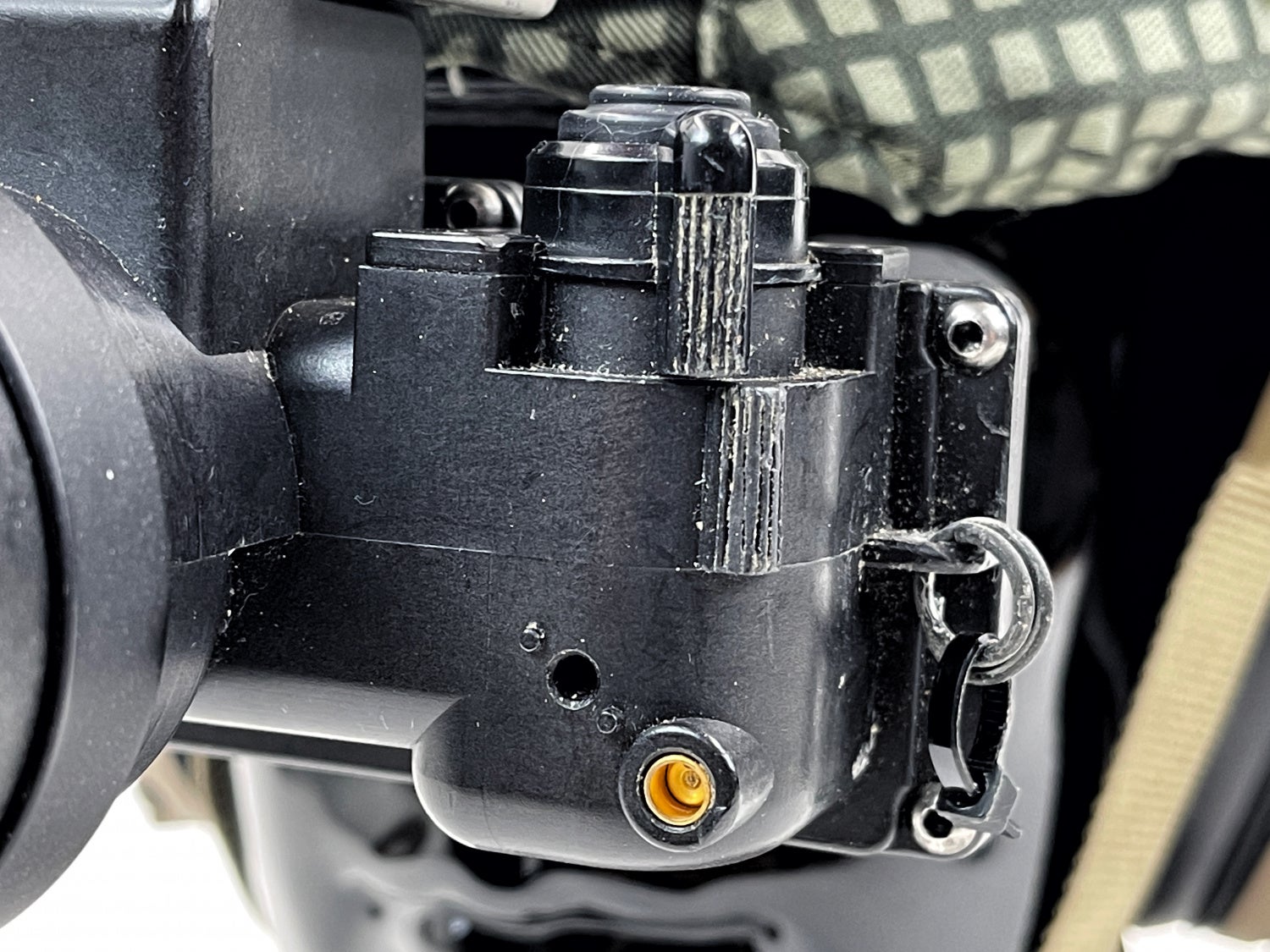
PVS-7A onboard IR illuminator.
The PVS-7A has interpupillary distance adjustment for the eyepieces but unlike the PVS-7, these eyepieces are linked to one another. When you push one in, the other will move in. When you pull one outward, the other side will move outward as well. They are geared inside.

Powering the PVS-7A
The PVS-7A battery compartment is completely different from the PVS-7. Instead of a tube with a large battery cap, the battery compartment is a reticular box. There is a triangular switch that you rotate to lock the battery door. Rotate it counterclockwise and tabs rotate out of the way and now you can pull the battery door open.


The PVS-7A is dual fuel. It can use 2X AA batteries or a lithium BA-5567/U. The BA-5567/U was a standard lithium battery for the US military and it was used in the PVS-5 before they switched to using AA batteries.
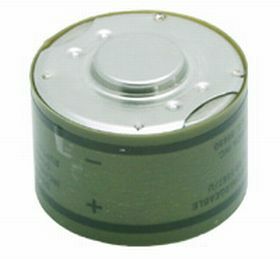
Photo by SAFT.
You insert the BA-5567/U into the battery compartment with the negative side tab pointing up. The PVS-7A can run for 30 hours on 2X AA batteries or one BA-5567/U.
Objective Lens
As mentioned earlier, the objective lens is very different. First, it has male threads and the actual lens cell translates forwards and backwards. Whereas the normal PVS-7 objective lens is similar to a PVS-14 objective, you rotate it to adjust focus and the lens spins. One benefit would be to add a COTI and it won’t spin as you adjust focus.

With the rubber grip ring removed you can see there is a small plastic tab that acts as a focus stop. This is for infinite focus and close focus stops.

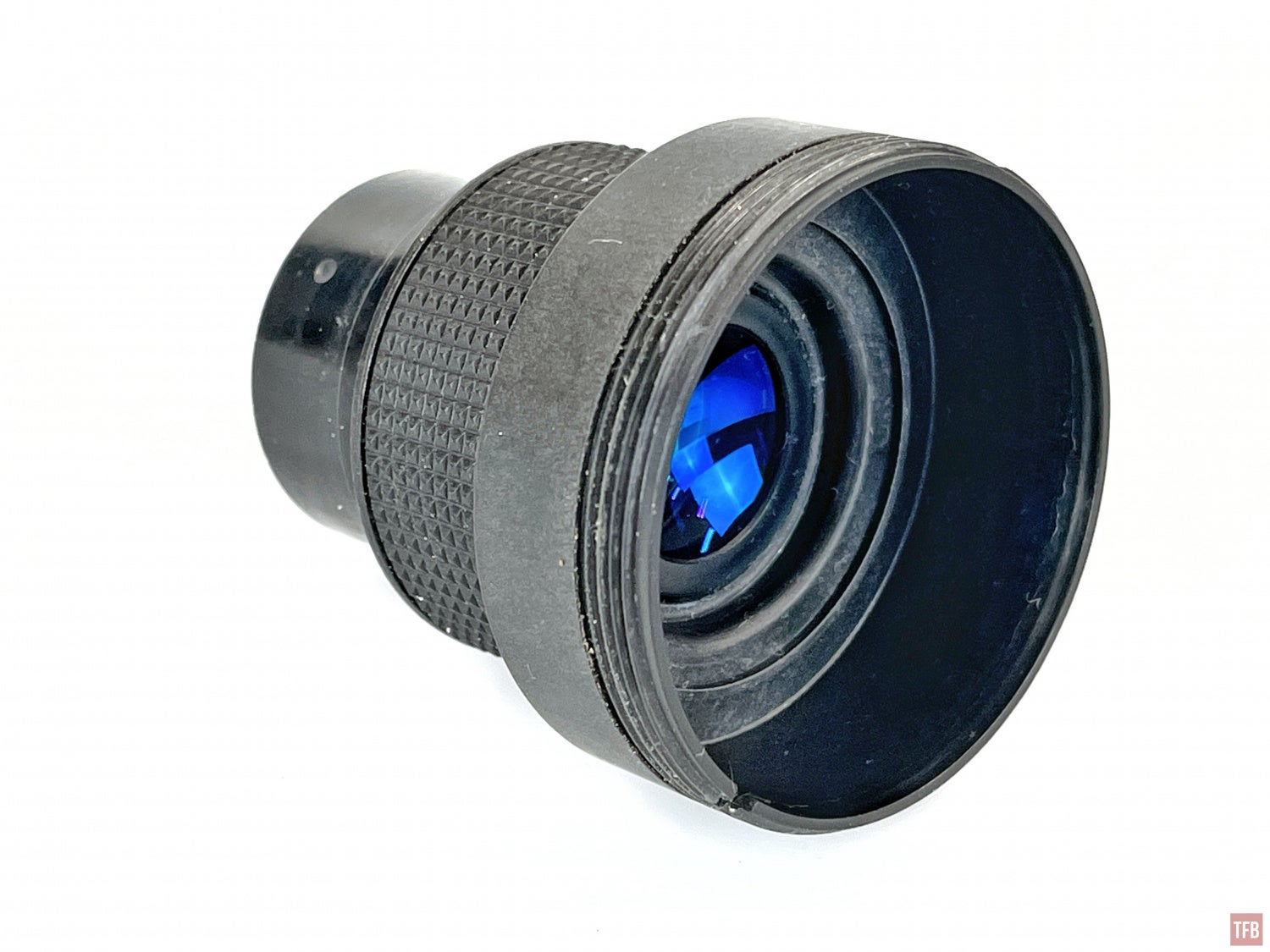
PVS-7A Image Intensifier
I managed to find a period-accurate 10130A image intensifier for the PVS-7A. Unfortunately, it was defective with a massive emission point so I did to keep it. But I did take photos of the tube.
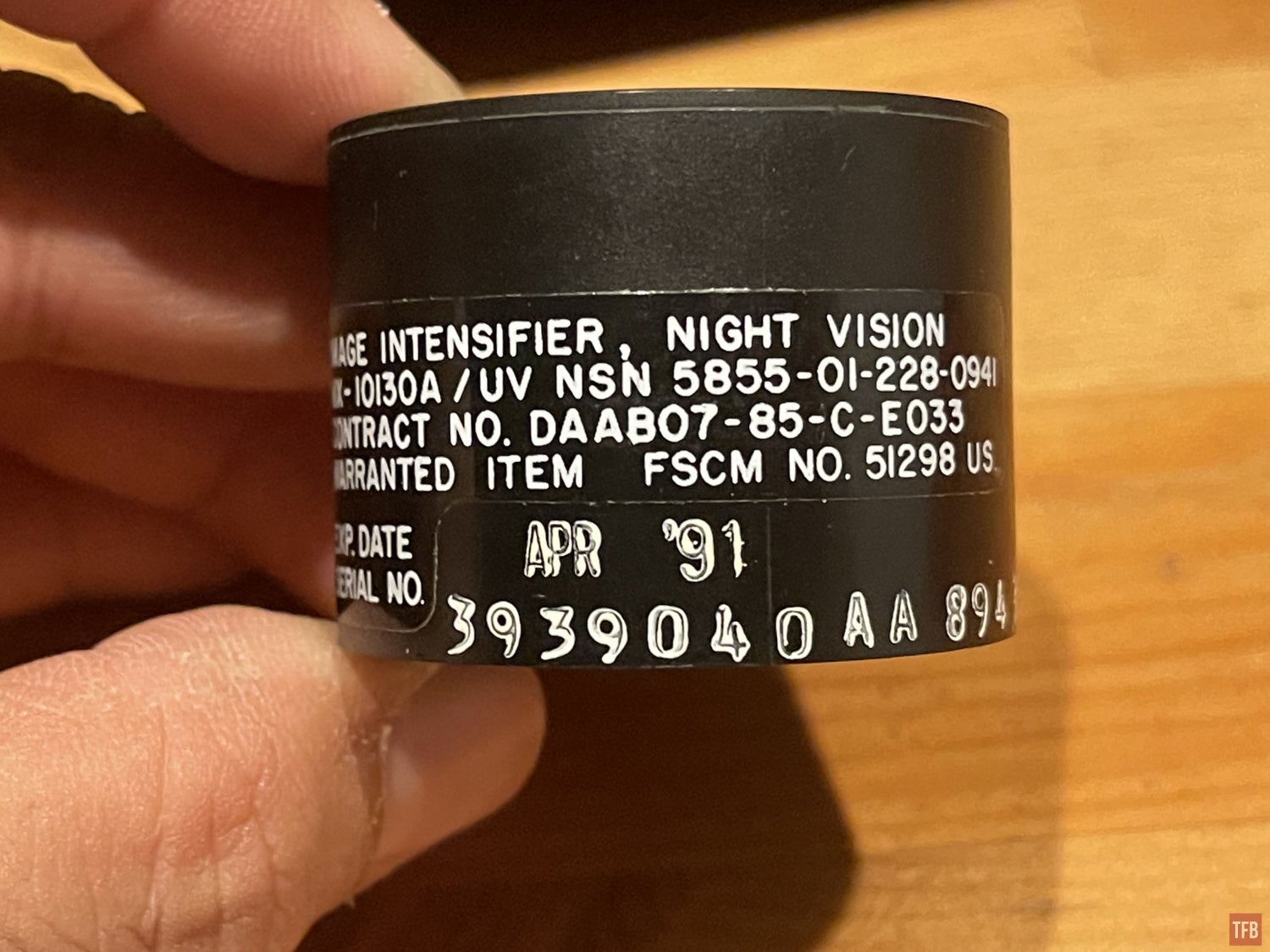
The tube is different from a normal PVS-7 tube. See the PVS-7A tube on the left and the normal PVS-7 tube on the right. You can use either tube in the 7A housing but you cannot use the old 10130A tube in newer PVS-7 housing. There are other issues like the output window depth is different and this affects focus. I am not sure why there is a difference and why they moved away from this design.


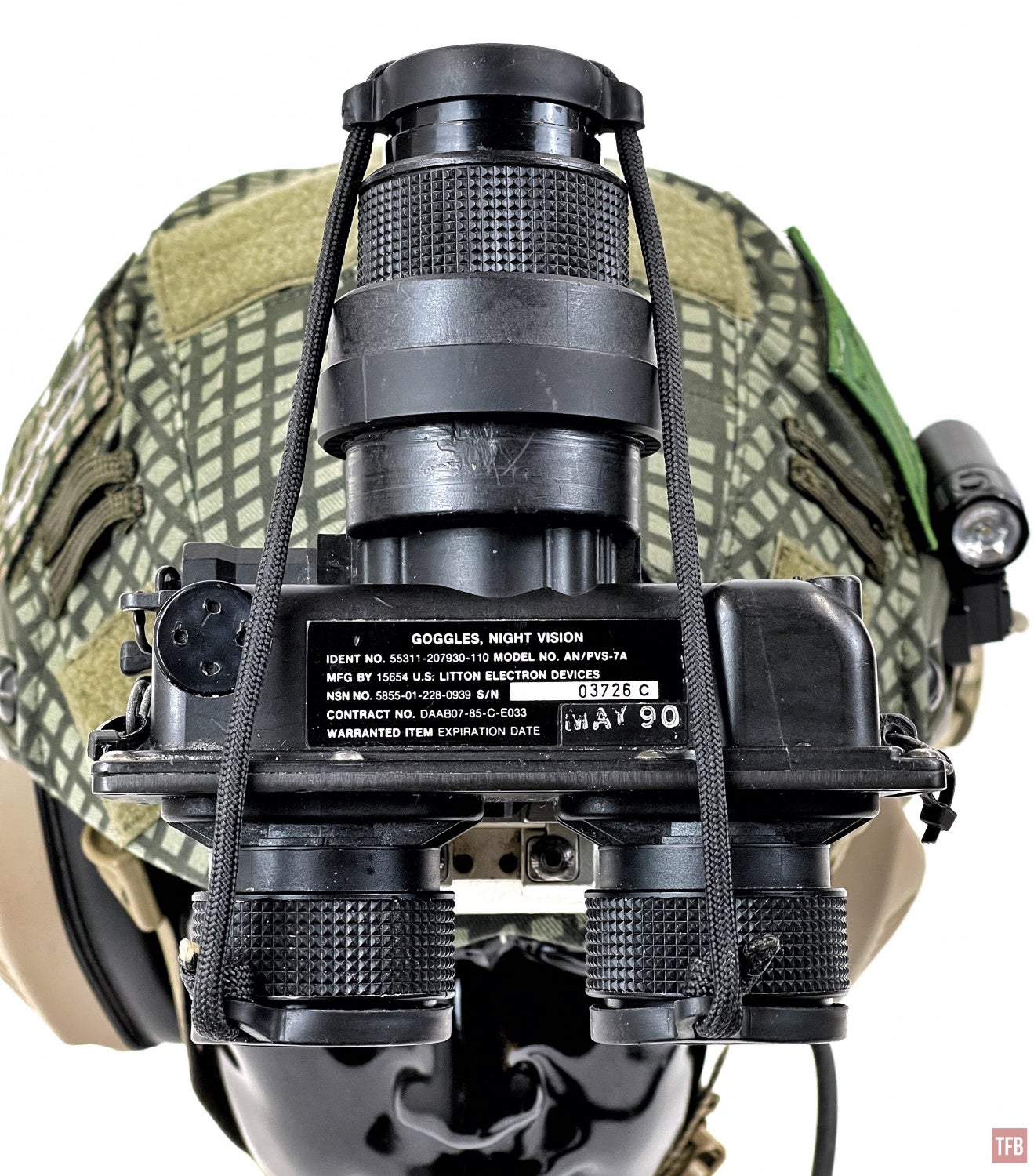

Final Thoughts on the PVS-7A
It is interesting to see what Litton had designed back in the late ’80s. For some reason, this design did not become popular and they switched to the normal PVS-7 design. This may be due to the necessity of the bayonet-style mounting interface being adopted over the dovetail. However, looking back the integrated dovetail makes more sense now that most night vision users have a Wilcox G24 mount. The magnetic switching does not work perfectly with the Wilcox G24. If I move the PVS-7A further back and touch the dovetail to the bottom of the mount it will activate with the head mount on position. However, this is pointless since the goggle is not actually mounted. The magnet in the mount is too far away to activate the 7A when docked.
The battery compartment and door design is the weak spot of this housing design. Like a dual AA PVS-14 battery housing, if the battery compartment breaks, the door cannot close and the goggle is useless. Or if the compartment gets deformed and the door tabs cannot interface properly, the goggle cannot be used. The molded dovetail seems less prone to breaking compared to the bayonet horns on PVS-7 housings but if it does break off, there is no way to mount the PVS-7A. It is a neat goggle to look at and look through but it is long since discontinued so finding replacement parts is more difficult while the normal PVS-7 can still be acquired.
 Your Privacy Choices
Your Privacy Choices
